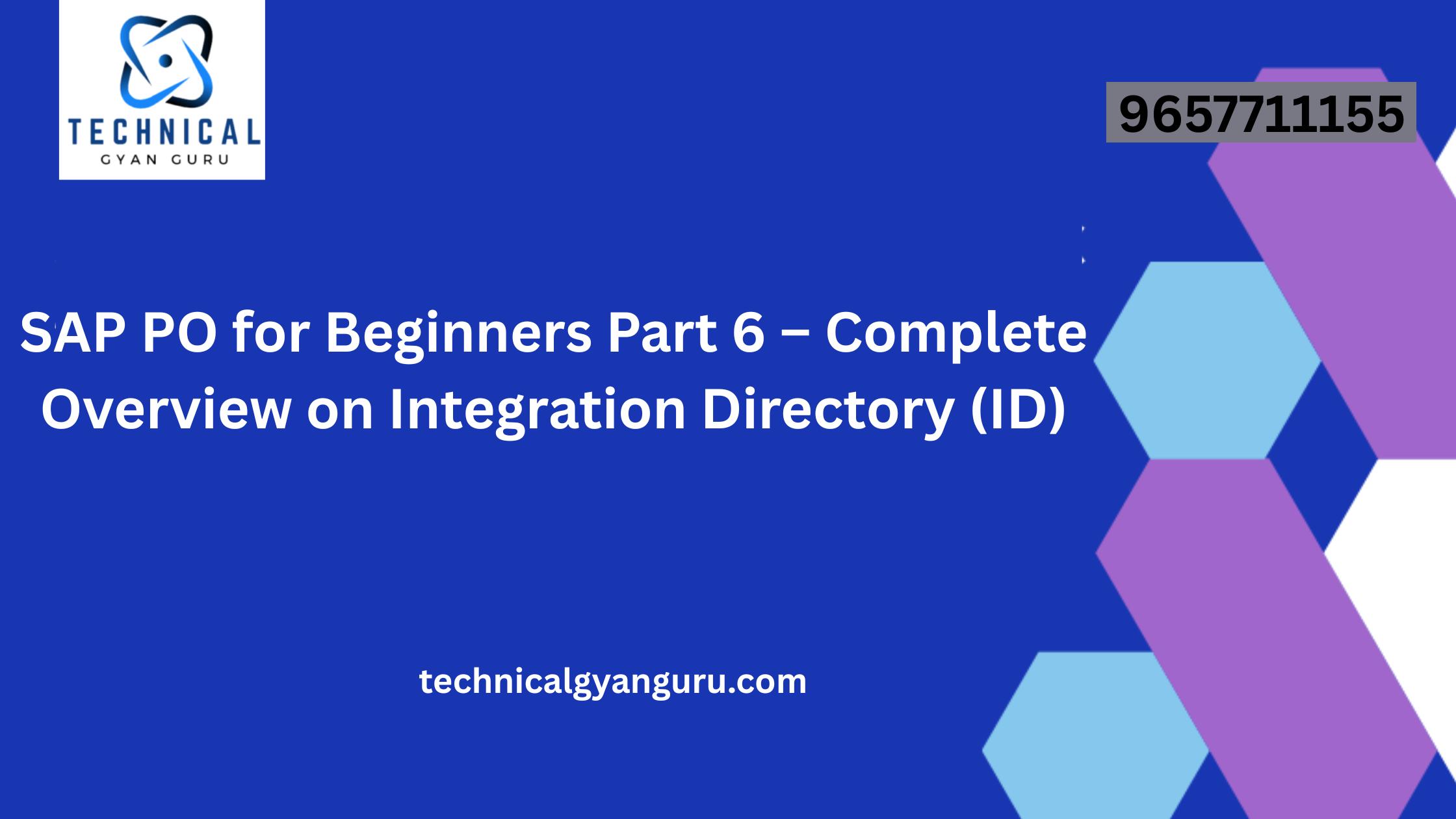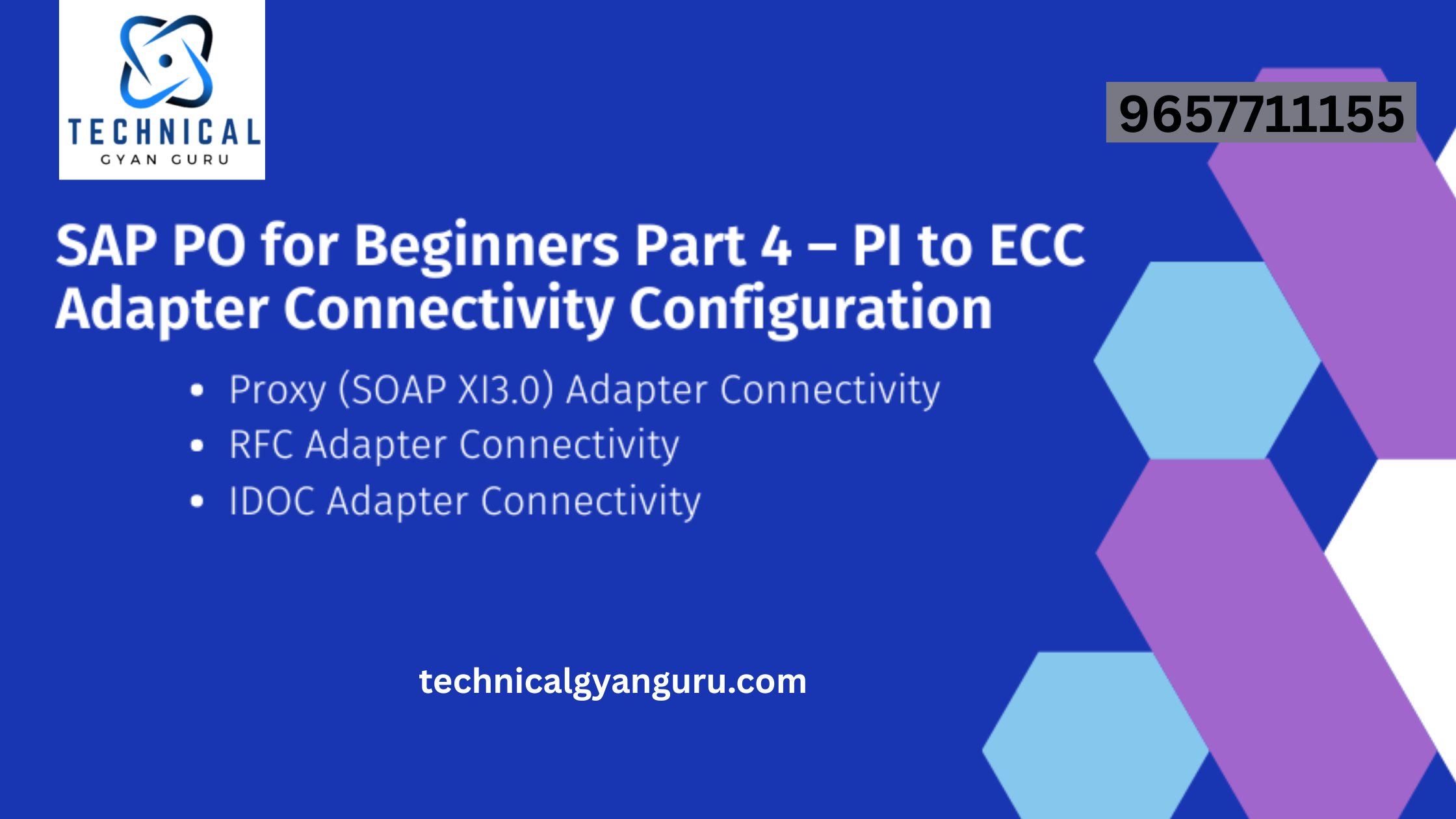
Introduction SAP Cloud Platform Integration
SAP Cloud Platform Integration: Most of the challenges associated with migration to SAP CPI can be solved using a dedicated migration accelerator tool. This is why HCLTech has introduced a tool called C3Pi to enable speedy, secure, and seamless transitions from SAP PI/PO to SAP CPI
Arguments in favors of Switching from SAP Process Integration/Process Orchestration (PI/PO) to Cloud Platform Integration (CPI)
As most readers are aware, because to its strong capabilities, user-friendly interface, and developer community support, SAP PI/PO is an on-premise middleware solution that is frequently utilized for various A2A and B2B connection scenarios. However, SAP has unveiled the obvious replacement for SAP PI/PO with the shift to a cloud-first product strategy. Using prefabricated integration material and a wide range of adapters and APIs, SAP CPI assists in smoothly connecting on-premise and cloud-based SAP applications to other SAP and third-party apps. SAP CPI helps you to optimize your business operations, provide linked digital experiences, and improve integration efficiency by bringing diverse data and systems from across your IT landscape together.
There are many compelling arguments for using SAP CPI in your company’s overall cloud strategy. We’ve listed some of the main justifications for moving from SAP PI/PO to CPI below:
- Rapid integration with prefabricated integration content: SAP CPI uses the 2600+ prebuilt integration scenarios, 2500+ ready-to-use APIs, and 200+ connectors available in the SAP API Business Hub to enable you set up cloud-to-cloud and cloud-to-on-premise connections quickly and affordably. Because SAP PI/PO lacks such prepackaged integration information, it is less useful than SAP CPI in quick integration scenarios.
- Real-time integration: Unlike SAP PI/PO, SAP CPI offers tools like SAP Event Mesh and SAP API Management to facilitate real-time integrationacross distributed application landscapes.
- Significant cost savings: Since SAP CPI is a cloud-based platform, it is simpler to monitor, operate, and implement than SAP PI/PO, which is installed on-premise. You don’t have to be concerned about on-premise middle ware’sfrequent hardware refresh cycles or high maintenance renewal costs while using SAP CPI.
- variable pricing: Depending on the demands of the customer’s business, SAP CPI offers variable pricing models including the Cloud Platform Enterprise Agreement (CPEA) and Pay as You Go (PAYG). With SAP CPI, unlike SAP PI/PO, you can get started right away with little initial outlay and no long-term financial commitments.
- A strong digital foundation for an intelligent enterprise: According to SAP, companies accelerating their journey to an intelligent enterprise by using SAP S/4HANA Cloud and RISE with SAP solutions should also switch to SAP CPI. This is so because all SAP LoB apps employ SAP CPI as their foundational integration technology.
- End of standard maintenance support for SAP conventional middleware: SAP said that it will continue to provide standard maintenance support for SAP PO 7.5 until 2027, but not for SAP PI/ PO 7.4 or earlier versions. Customers that are now using SAP PI/PO 7.5 should switch to SAP CPI because it is more adaptable and affordable than its predecessor.

Business difficulties during the transition from SAP PI/PO to SAP CPI
While it is undeniably true that SAP CPI provides businesses with a modern and agile integration environment, enabling them to develop more quickly and remain future-ready, migration is not without its difficulties. These consist of:
Longer implementation period: It is challenging for businesses to assure a quick and secure transfer from SAP PI/PO to SAP CPI because there aren’t any high-quality migration automation technologies available on the market. Without a trustworthy automation tool, estimating the money and resources required for the SAP CPI transfer project is particularly difficult.
High prices: Migration from SAP PI/PO to SAP CPI is a difficult process with many steps, including migration evaluation, planning, and implementation. To evaluate their current PI/PO integration environment, define migration methods, and test moved content, businesses need specialized integration developers. (message mappings, interfaces, etc.). For businesses, manual implementation of these processes is more expensive and time-consuming.
Key Features and Benefits
The platform’s key features, such as real-time integration and scalability, empower businesses to respond swiftly to dynamic market demands. Additionally, the benefits include improved agility, reduced operational costs, and enhanced customer satisfaction.
Addressing Common Misconceptions
However, misconceptions about the complexity of SAP Cloud Platform Integration often deter organizations from exploring its full potential. It’s essential to debunk these myths and shed light on the simplicity and user-friendly nature of the platform.
Assessment and Planning
A successful migration journey begins with a comprehensive assessment of your existing systems and a well-thought-out plan. Before diving into the technical aspects, understanding the current state of your systems is crucial.
Thorough System Assessment
Conducting a thorough system assessment involves analyzing existing infrastructure, identifying dependencies, and evaluating data structures. This step sets the foundation for a tailored migration plan.
Creating a Detailed Migration Plan
Crafting a migration plan involves outlining the step-by-step process, allocating resources, and establishing timelines. A detailed plan not only ensures a smooth transition but also minimizes disruptions to ongoing business operations.
Data Migration Strategies
One of the critical aspects of migrating to SAP Cloud Platform Integration is the seamless transfer of data. Choosing the right data migration strategy is paramount to maintaining data integrity and avoiding potential disruptions.
Choosing the Right Data Migration Approach
Whether it’s a staggered approach or a full-scale data migration, selecting the right strategy depends on factors such as data volume, system complexity, and business continuity requirements.
Ensuring Data Integrity During Migration
Data integrity is non-negotiable. Implementing robust data validation processes and employing encryption techniques during migration safeguards against potential data corruption or loss.
Application Migration
Migrating existing applications to SAP Cloud Platform Integration requires careful consideration of compatibility and potential challenges.
Strategies for Migrating Existing Applications
Selecting the appropriate migration strategy for applications, be it rehosting, refactoring, or rearchitecting, is pivotal for a successful transition.
Compatibility Considerations
Ensuring that existing applications are compatible with the new platform involves thorough testing and addressing any dependencies that may arise during migration.
Integration Challenges and Solutions
Integration challenges are inevitable, but proactive planning and effective solutions can mitigate their impact on the migration process.
Identifying Common Integration Challenges
From system interoperability issues to data synchronization complexities, understanding common challenges prepares businesses for potential roadblocks.
Providing Effective Solutions
Implementing middleware solutions, API management, and comprehensive testing protocols are key strategies to overcome integration challenges seamlessly.
Testing and Quality Assurance
Rigorous testing is the linchpin of a successful migration. Ensuring that all components work harmoniously is crucial for a smooth transition.
Importance of Rigorous Testing
Comprehensive testing, including unit testing, integration testing, and user acceptance testing, guarantees a bug-free migration.
Strategies for Ensuring Quality Assurance
Implementing quality assurance measures involves continuous monitoring, identifying potential issues, and resolving them promptly.
User Training and Adoption
Technology is only as effective as the users who engage with it. Facilitating a smooth transition involves comprehensive user training programs and fostering user adoption.
Developing User Training Programs
Well-structured training programs empower users to navigate the new platform confidently, maximizing its benefits.
Promoting User Adoption of the New Platform
Engaging users through workshops, demonstrations, and user-friendly interfaces fosters a culture of acceptance and enthusiasm toward the new integration platform.
Monitoring and Optimization
The journey doesn’t end with migration. Continuous monitoring and optimization are essential for maintaining peak performance.
Implementing Monitoring Tools
Utilizing monitoring tools provides real-time insights into system performance, allowing for proactive issue resolution.
Continuous Optimization for Peak Performance
Regularly optimizing configurations and addressing bottlenecks ensure sustained efficiency and maximum ROI from the SAP Cloud Platform Integration.
Benefits of a Smooth Migration
A well-executed migration journey yields a plethora of benefits that contribute to the overall success of an organization.
Enhanced Efficiency and Productivity
Streamlined processes and real-time data access contribute to enhanced overall efficiency and productivity.
Cost Savings and Resource Optimization
Reduced operational costs, coupled with optimized resource utilization, translate into significant cost savings for businesses.
Real-life Success Stories
Real-world examples of businesses that have successfully migrated serve as inspiration and provide valuable insights.
Showcasing Businesses That Successfully Migrated
Highlighting the success stories of organizations that navigated the migration journey successfully adds credibility and encourages others to follow suit.
Lessons Learned from Their Experiences
Extracting lessons from these experiences helps businesses avoid common pitfalls
and leverage best practices for a smoother transition.
Common Pitfalls to Avoid
While the benefits of migrating to SAP Cloud Platform Integration are substantial, it’s crucial to be aware of potential pitfalls that can hinder the process.
Identifying Potential Pitfalls in the Migration Process
Issues such as inadequate planning, insufficient training, or underestimating data complexity can pose significant challenges.
Tips for Avoiding Common Mistakes
Proactive measures, including thorough planning, robust training initiatives, and engaging experts, can help organizations steer clear of common pitfalls.
Post-Migration Support
The journey doesn’t end with migration; providing ongoing support is paramount for a successful integration.
Providing Ongoing Support Post-Migration
Establishing a support system ensures that users can navigate potential challenges and receive assistance when needed.
Addressing User Concerns and Issues
Promptly addressing user concerns fosters a positive post-migration experience, building confidence in the new platform.
Future-Proofing Your Integration
In the rapidly evolving tech landscape, future-proofing your integration is essential for long-term success.
Considering Future Upgrades and Developments
Being mindful of upcoming upgrades and developments ensures that your integration remains cutting-edge and aligned with industry standards.
Staying Ahead in the Rapidly Evolving Tech Landscape
Adopting an agile mindset and staying informed about emerging technologies positions your organization to adapt seamlessly to future changes.
Conclusion
In conclusion, accelerating and simplifying your migration journey to SAP Cloud Platform Integration involves a strategic, well-executed plan. From thorough assessments and meticulous planning to addressing challenges and providing ongoing support, each step plays a crucial role in ensuring a smooth transition. The benefits, including enhanced efficiency, cost savings, and future-proofing, make the effort worthwhile for businesses aiming to stay competitive in today’s dynamic landscape.
Frequently Asked Questions (FAQs)
- Q: Is SAP Cloud Platform Integration suitable for all types of businesses?
- A: SAP Cloud Platform Integration is designed to cater to a wide range of businesses, from small enterprises to large corporations. However, the specific suitability depends on individual business needs and requirements.
- Q: How long does the typical migration process to SAP Cloud Platform Integration take?
- A: The duration of the migration process varies depending on factors such as the complexity of existing systems, data volume, and the chosen migration approach. A well-planned migration can take several weeks to months.
- Q: What kind of support is available post-migration?
- A: Post-migration support includes access to documentation, online resources, and, depending on the service agreement, direct support from SAP or authorized partners.
- Q: Can existing applications be seamlessly integrated into SAP Cloud Platform Integration?
- A: Yes, existing applications can be migrated and integrated into SAP Cloud Platform Integration. Various strategies, such as rehosting or refactoring, can be employed based on the specific requirements.
- Q: How often should optimization and monitoring be performed after migration?
- A: Continuous optimization and monitoring are recommended. Regular assessments ensure that the system is operating at peak efficiency and allows for proactive identification and resolution of any issues.







